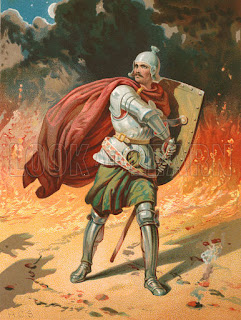The Public Reading of Scripture
Quite some time ago, I was studying some of the practices
of the ancient apostolic church and ran across some of the writings of Justin
Martyr. In his Apology 1.67, he describes just a portion of what took place in
ancient times:
. . . and on the day called Sunday, all who live in
cities or in the country gather together to one place, and the memoirs of
the apostles or
the writings of the prophets are
read, as long as time permits; then, when the reader has ceased, the president
verbally instructs, and exhorts to the imitation of these good things. . .
A great concern that I have in our time is the very
overwhelming biblical illiteracy that faces our nation, local congregations, and
even the ministry that attempts to serve in these churches. I probably work far too hard with preaching
and teaching the Word but because I have become convinced that it is my main
priority (Acts 6:4) therein lies my emphasis on it. One of the ways that felt that I could combat
this biblical illiteracy was to incorporate the public reading of the Bible
during our Sunday night services. We continue
to have an active Sunday School program along with a Wednesday night Bible
study. I would also note that our Wednesday
night service is also marked by a concentrated time of prayer where we still
kneel and pray for the needs of our church.
So, there was already a Word emphasis in those services but I felt to
add it to Sunday night would help us as well.
I little over a year ago, I asked my son, Nate, to start
in Psalm 119 and read two stanzas which was sixteen verses. He would read it and the congregation would
read aloud with him as well. We integrated
this practice directly after receiving our offering. Since that time, we have completed Psalm 119,
Hebrews, Psalms 121-134 (Songs of Ascent), Colossians, 1 & 2 Thessalonians,
portions of Isaiah, Philippians, Ephesians, Psalms 1-10 (ongoing), 1 & 2
Timothy, and Titus. This has been another
practice that I have tried to get our congregation to treasure the Word. I also have stressed the need for everyone to
have a hard copy of a Bible and not to rely on electronic gadgetry sorts of
devices. While I am not opposed to them
necessarily, I have said it numerous times that when solid saints die and pass
from this life, no one will want their iPhone but they will highly treasure a
marked up, prayed over, tear stained Bible far more.
In closing, I would offer just a few practical suggestions. It is important that you choose someone who
is a good reader to lead the congregation in reading. I would never want to embarrass someone who was
a halting reader. It is important to
break up the passages like the Sermon on the Mount. I used the paragraph markings to make sure the
context of SOM was held intact. That is
probably the only reading that I had to do so.
The rest of the readings were pretty much held to reading a single
chapter at a time which seemed to work well although there are times when you
read 20 or more verses. This may the
longest reading that any of your congregants do during their entire week. I have tried to discourage for the reading to
turn into a “preaching” sort of reading as you might find in a Pentecostal
sermon. It is also necessary for the
reader to be confident and call the text off at least three times. I have discouraged the readers from telling
people to say “Amen” when they get to the text because if pages are still turning,
the slower people will get to the text after the public reading has
started.
All in all, it has been a good experience for everyone in
our church. You can see children following
along and reading aloud as well as the other end of the age spectrum with our
elders. It is my hopes that this will be
a practice you consider starting in your church. It is just another way to add to our
familiarity with the Word.
Thanks for reading. . .






Comments